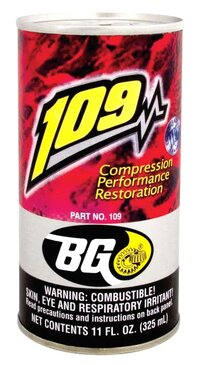Hey Cap'n - thanx for the effort at supplying details - helps us get in your head and the situation better.
My thinking is that the variability should be higher. The rings rotate around the piston over time, and eventually you will have two rings whose end gaps are much closer together than in the other cylinders. While the gaps aren't huge they do get bigger over time as they wear. Imagine for a second having built an engine without any rings. Assume we found a way to keep the piston from banging against the cylinder wall. Crank it over and do a compression test. Yeah I could imagine they would all be pretty uniform measurements, but the difference in area between the piston and the cylinder amounts to something of the order of 2%. I looked up a bunch of ring specs, and at 93mm bore allowing 1mm (0.040") clearance that's the difference in area. It's not exact but should be close enough to illustrate my point here. I would expect pumping that piston up and down in the cylinder at ~400rpm would get you reasonable pressures without rings! Put the rings back in and even allow for them to be stuck in the groove by heavy carbon buildup, and they'd still probably protrude somewhat, reducing the compression blowby by some amount. I'm only guessing at what the ringless engine loss of compression would be, but my gut feel is it would still run. Misfiring like crazy though, burning oil, throwing codes...bear with me, I know I'm being a little silly but I'm trying to get somewhere with this

...then ran the engine with the plug in
Not to play dumb here but you meant cranked it right?
You got me. Perhaps because the pressures are so even across the board is the reason it runs so smooth?
I can see how you might think that, but smooth running isn't coming so much from equal power being produced by each cylinder so much as it comes from one or more cylinders NOT firing inconsistently. The cylinder to cylinder difference in power output when all are firing vs the difference when one fires only say 80% is minor in comparison.
The dry vs wet test most definitely fits worn cylinders and/or piston rings. Its really the only plausible explanation from all the documentation I have read on the internet. It's not timing chain slipped, it's not valves... Only so many parts in an engine you can blame
Agreed, and I can only say that at this point I don't have a good feel for what the difference (of a healthy engine) would be wet vs dry. Just going on intuition I hadn't expected that much delta personally, but haven't found any info to really quantify it. It will always go up some amount wet vs dry, I just don't have any clue what's "normal" and what would be considered drastic enough to lead to a conclusion of (really) bad rings.
Are you referring to the published cylinder pressure numbers? 215 psi as indicated in Alldata? Not 100% following you here
Yeah that's what I was referring to. I know the 215 is on Alldata, I can confirm I read the same figure in an '04 Trailblazer manual...but from reading some info on compression test methodologies, there are different ways of reporting it (eg dynamic vs static). For example, let's have a perfect world & we have rings that allow absolutely zero compression loss. We go slow, piston at BDC we open the intake valve manually let the cylinder equalize to atmospheric pressure (14.7psia). Then we close the valve and slowly push that piston to TDC in the 100% lossless cylinder. At 10:1 compression you'd expect the pressure to be somewhere around 150psia (135psig). But life gets a little complicated in real world compression tests because when you compress it very quickly, the temperature doesn't stay constant (pV=nRT) and the pressures will be higher. now add back in some rings which have imperfect sealing and the result changes a bit again. In an operating engine when you add fuel that evaporates the pressure is even higher (And it's also compressing faster, adding pressure).
So what I was trying to get at was that the 215 publicized by Alldata (& probably merely repeated from some other source) might be correct for a certain methodology - but if you're not doing that you may get different results. That's why I suggested the PM to MAY03LT. So since I have been unable to find real world results anywhere, and since you have none of the other important symptoms, for the moment I am suspicious that we're trying to compare apples to watermelons. Also, not to insult you, but can we verify that you did the test with all plugs removed, as opposed to one at a time?
Cheers



 (try to get #6 in there, given previous misfire history)
(try to get #6 in there, given previous misfire history)



 Thanks for the tip though. Might come in handy.
Thanks for the tip though. Might come in handy.
